《1 Introduction》
1 Introduction
The division of labor in the global manufacturing industry is undergoing profound adjustments. The external environment and internal conditions of China’s manufacturing industry are undergoing significant changes. In terms of the external environment, technological revolution and industrial transformation are in progress, the risk in global economy is increasing, the effect of Corona Virus Disease 2019 (COVID-19) is widespread, the risk of technological “decoupling” is increasing, a clear trend in manufacturing backflow is observed in developed countries, and the economic globalization is being challenged. In terms of internal conditions, China’s advantages in manufacturing are declining gradually, and the spread of the COVID-19 pandemic outside China has adversely affected industrial and supply chains, thereby resulting in an increase in uncertainties and risks in the global landscape. Hence, China has accelerated the establishment of a “dual circulation” development pattern, in which the domestic economic cycle is critical, whereas the international economic cycle maintains its extension and supplement roles. Although the general economic situation is improving, the growth rate of investment in manufacturing is low. Improving the core competitiveness of China’s manufacturing industry remains challenging.
The China Manufacturing 2025 plan requires quality to be ensured to improve China’s manufacturing strength. We should consolidate the foundation of product quality, improve the brand value of Chinese enterprises, and establish a high-quality reputation of China’s manufacturing products [1]. In fact, quality must be guaranteed for strengthening China’s manufacturing industry and is vital to economic transformation and technological upgrade [2–4]. Improving quality, efficiency, and high-quality manufacturing are the only methods for achieving breakthroughs in the industry. Each implementation for achieving high quality is the result of technological innovation in response to the market demand. Technology iterations are accelerating in the new round of technological revolution and industrial transformation. Therefore, a high-quality manufacturing technological system that supports Chinese enterprises’ efforts for achieving high-quality manufacturing must be established. We will endeavor to promote technological transformation and improve research and developement (R&D) and manufacturing capabilities to reduce costs and improve the quality and efficiency of China’s manufacturing industry.
High-quality manufacturing is vital to improving a country’s core competitiveness owing to the new normal in the national economy [5]. High-quality manufacturing has been widely investigated since its proposal. Comprehensive studies pertaining to this topic have resulted in the formulation of key tasks for high-quality manufacturing, such as consolidating the quality infrastructure and realizing China’s strong brand recognition in terms of manufacturing quality [6,7]. Furthermore, implementing quality improvement projects for all employees and advocating a long-lost craftsman spirit will provide a talent pipeline for high-quality manufacturing [8]. Additionally, the concept of quality manufacturing ecology enriches the quality manufacturing framework from the perspective of systems engineering [9]. Some scholars have focused their studies on specific industries, such as medical devices and machine tools, and have developed plans to address bottlenecks in high-quality manufacturing [10,11]. However, a well-defined concept or a development path for key technologies pertaining to high-quality manufacturing has not been established. A plan to improve high-quality manufacturing with focus on technological dimensions is urgently necessitated in China.
This study offers a comprehensive analysis of key aspects pertaining to China’s development in manufacturing quality. Improvements pertaining to high-quality manufacturing are investigated, and a summary of the definition and features of high-quality manufacturing is provided using a four-in-one framework, which involves supply, demand, government supervision, and the quality infrastructure. In addition, a high-quality manufacturing technological system for the entire process of design–production–operation–maintenance is proposed as a technological foundation for high-quality manufacturing, generic quality technology, whole-lifecycle quality control technology, and resource elements. The authors attempt to provide a systematic framework for theoretical and policy research pertaining to high-quality manufacturing.
《2 Key aspects of China’s manufacturing quality and key to promoting high-quality manufacturing》
2 Key aspects of China’s manufacturing quality and key to promoting high-quality manufacturing
《2.1 Key aspects in development of China’s manufacturing quality》
2.1 Key aspects in development of China’s manufacturing quality
2.1.1 Further improvement in benefits afforded by high quality
After over 40 years of reform, China’s manufacturing industry currently ranks first in the world. However, its quality benefits are significantly less than those of developed countries. Based on the average profit margin of manufacturing companies listed in the Fortune Global 500, the average profit margin of Chinese manufacturing companies is significantly less than those of developed countries, such as the United States and Germany. According to statistics, the average profit margin of Chinese manufacturing companies listed in the Fortune Global 500 in 2020 is approximately 3%, which is significantly lower than 9.1% in the United States and 4.3% in Germany (Fig. 1). The fact that most made-in-China products are in the low end of the value chain remains the status quo. Thus, the quality benefits must be further improved.
2.1.2 Weak international influence of manufacturing brands in China
The international influence of Chinese-made brands has increased in recent years. Based on the influence values of the top 500 manufacturing companies released by the World Brand Laboratory (Fig. 2), the gap between the brand influence of Chinese manufacturing companies and that of Germany, Japan, and France has decreased. However, the impact value of China remains significantly less than those of US companies. The international influence of manufacturing brands is affected by multiple factors such as reliability, consistency, stability, and other quality features of the products. The performance of Chinese manufacturing brands is comparable to in terms of these factors. Quality problems caused by insufficient technological capabilities are the most important factors constraining the influence of Chinese brands. The influence of manufacturing brands and the image of made-in-China products in the global market must be promoted by enhancing the technological capabilities of Chinese firms.
《Fig. 1》
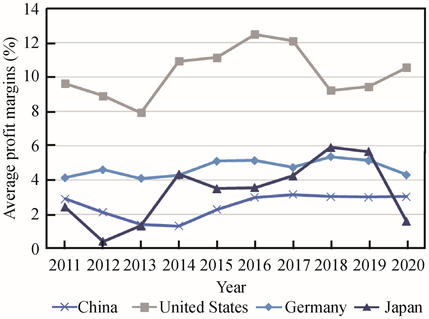
Fig. 1. Average profit margins of Fortune 500 manufacturing enterprises in China, the United States, Germany, and Japan.
《Fig. 2》
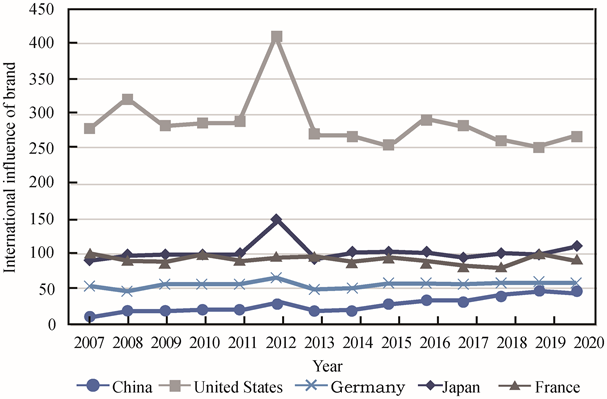
Fig. 2. International influence of Brand 500 manufacturing enterprises in China, the United States, Germany, Japan, and France.
2.1.3 Challenges in quality upgrade of industry chain
In the industrial chain, quality upgrades are affected by three primary challenges: First, the supply capacity of the industrial chain is insufficient. According to the Ministry of Industry and Information Technology’s survey of more than 130 key basic materials in more than 30 large enterprises across the country, 32% of the key materials are not available, and 52% rely on imports, thus resulting in a severe undersupply in the industrial chain. Second, motivation for improving the quality of the industrial chain is lacking. High-quality products are not sold at commensurate prices. “Bad money drives out good”. The phenomenon of low price competition still exists, and profit distributions in some industrial chains are unbalanced. Third, the industrial chain is not well coordinated. Most Chinese enterprises focus on the low end of the industry chain in the semiconductor industry owing to inadequate technology for ensuring high quality, inconsistent mass productions in the middle and high ends of the industry chain, and the absence of an effective collaboration model in the industry chain. According to the 2021 report of the American Semiconductor Industry Association, the revenue of mainland Chinese companies constituted only 5% of the total revenue of the global semiconductor industry chain in 2020, which is significantly disproportional to their market share.
《2.2 Key aspects for improving high-quality manufacturing》
2.2 Key aspects for improving high-quality manufacturing
High-quality manufacturing is a systematic and coordinated development process. From a systematic perspective, a framework based on the four-in-one model involving supply, demand, government supervision, and the quality infrastructure (Fig. 3) was established to analyze key issues in improving high-quality manufacturing.
《Fig. 3》
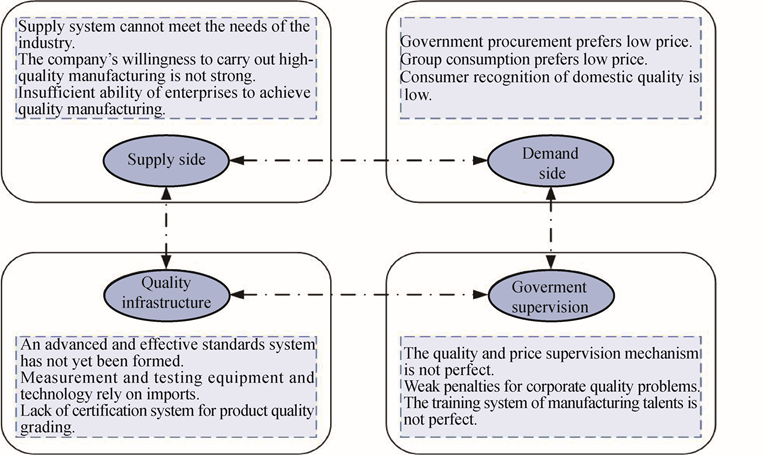
Fig. 3. Key aspects for improving high-quality manufacturing.
In terms of supply, the supply system does not satisfy the requirements of the industry, and the overall reliability of the product must be further improved. A gap exists between the quality and benefits of China’s manufacturing sector and those of developed countries. Furthermore, independent branding for middle- and high-end products in China is inadequate. The changing industrial landscape and global trade environment along with the inadequate investment and innovation in key technologies have constrained the ability and willingness of China’s manufacturing enterprises to implement high-quality manufacturing. Many new technologies and products are still in the research and development stages, where issues related to reliability, consistency, and stability are yet to be solved.
In terms of demand, the competition-for-low-price strategy in the current procurement sector does not support the pay-for-quality mindset; therefore, consumers are unwilling to purchase high-quality products at comparatively higher prices. Two opposite trends are evident in consumer behavior in China. Most consumers tend to purchase products at low prices because of their limited purchasing power. Meanwhile, quality- and safety-conscious consumers have low confidence in the quality of local products and are more inclined to purchase foreign-made products.
In terms of government supervision, the price policy and quality control mechanisms can be further improved. The low-price policy fails to achieve an appropriate balance between quality and price, resulting in low quality and low price. The pricing policy for government purchases of products of different quality standards does not reflect the value of high quality in the marketplace. Therefore, it fails to convey the quality-first concept. Additionally, product quality supervision and long-term regulatory mechanisms are inadequate. The effort required to improve inferior quality does not justify the implementation of correction and improvement measures. In addition, the overall quality, technology, and skill sets of the workforce in China are inferior, and the training system is incomplete. A multifaceted and all-dementinal training system is required to improve the effectiveness and efficiency of talent training programs.
With regard to quality infrastructure, an advanced and effective standards system has yet to be developed. Inadequate infrastructure hinders the development of new industries. Measurement and testing equipment rely significantly on imports, and the capacity of high-end inspection and testing equipment is low. In emerging industries of strategic importance and high-technology fields such as life sciences and artificial intelligence (AI), the severe challenge of “either no testing capability or inaccurate test results” is yet to be addressed. An appropriate accreditation system for quality grading is not available. A clear definition of superior quality is yet to be established, and accreditation corresponding to high-quality products for brand recognition and protection is yet to be realized.
《3 Definition and specific features of high-quality manufacturing》
3 Definition and specific features of high-quality manufacturing
《3.1 Definition of high-quality manufacturing》
3.1 Definition of high-quality manufacturing
High-quality manufacturing, based on the national quality infrastructure and supported by high-quality resources, is applied to the entire lifecycle of products through the comprehensive application of key generic technologies such as big data, intelligent manufacturing, and process optimization. It is a new manufacturing model that considers the effects of new models and new business modes such as Internet Plus, the sharing economy, and service manufacturing, precisely understands customer needs, improves product quality and benefits, and upgrades products from acceptable quality to superior quality [12].
High-quality manufacturing features a “precise, lean, accurate, and refined” production process. (1) Precise understanding of demand implies the use of big data and intelligent prediction technologies to identify dynamic changes in customer demand and use them as the inputs for lean system optimization. (2) Lean system optimization translates demand into product development and design, process optimization, production system planning, and service system optimization to achieve optimized decision-making based on the added value of the products. (3) In accurate process control, data analysis is performed for the entire manufacturing process, whereas Internet of Things (IoT) technology and engineering knowledge are used to precisely control the process and ensure robustness. (4) In refined element management, the mechanism of all elements pertaining to product quality in the entire lifecycle is analyzed, whereas quality management methods are integrated and applied to integrate all elements.
《3.2 Specific features of high-quality manufacturing》
3.2 Specific features of high-quality manufacturing
The primary features of the high-quality manufacturing process are shown in Fig. 4. The first is international competitiveness. Good “quality manufacturing” features high quality, reasonable profit margins, and a competitive advantage. The second is brand influence based on product quality. Brand influence depends significantly on product quality, and a good brand image corresponds to a high premium. The third is the sustainable innovation capability, which represents the development potential of high-quality manufacturing and is an important indicator of the manufacturing quality. The fourth is excellent products and services. The entire high-quality manufacturing process is ultimately reflected by high-quality products and services.
《Fig. 4》
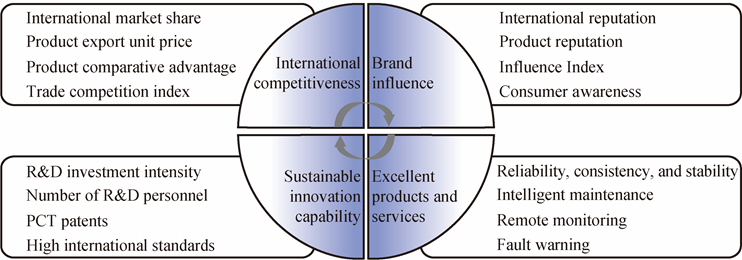
Fig. 4. Features of high-quality manufacturing.
Note: PCT refers to Patent Cooperation Treaty.
《4 Technological system for high-quality manufacturing》
4 Technological system for high-quality manufacturing
The high-quality manufacturing technology framework comprises quality infrastructure, generic quality technologies, whole lifecycle quality control technologies, and resource elements (Fig. 5). Among the four, the quality infrastructure and generic quality technologies are considered the foundation. The quality infrastructure includes standards, measurement, inspection and testing, and certification and accreditation technologies. Generic quality technologies include big-data analysis, statistical analysis, information management, engineering knowledge analysis, and AI technologies. The three “pillars” encompass the entire lifecycle quality control technologies, including high-quality design, production, and operation & maintenance. The resource elements include processing and testing equipment, industrial software, core foundation components, key foundation materials, and other industrial foundations, which ultimately result in high-quality manufacturing of high-end equipment and consumer goods.
《Fig. 5》
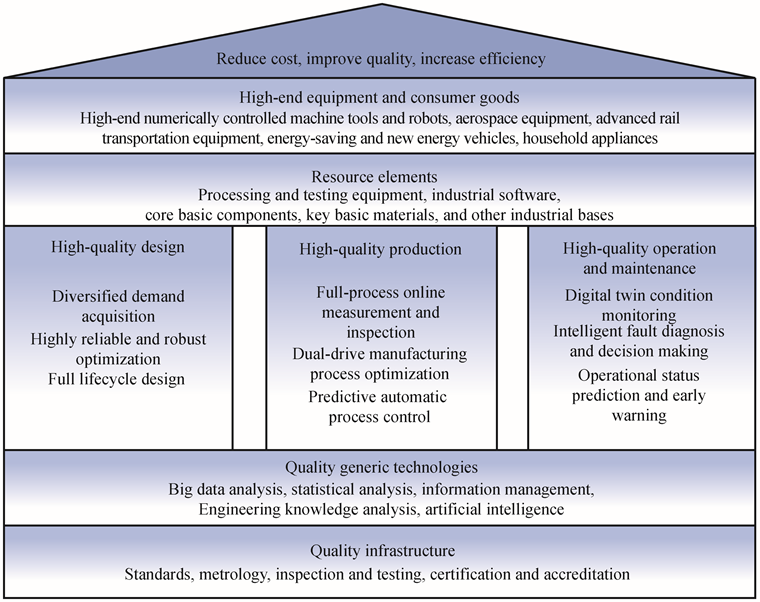
Fig. 5. Technological system for high-quality manufacturing.
《4.1 Quality infrastructure for high-quality manufacturing》
4.1 Quality infrastructure for high-quality manufacturing
The quality infrastructure (including standards, measurement, inspection and testing, as well as certification and accreditation as elements) is an important technical method for enhancing quality competitiveness [13]. Furthermore, it is vital to the development of high-quality manufacturing technology in the new era. The quality technology is being further developed to improve intelligence, internationalization, and integration.
Owing to the integration of industrialization and informatization, the quality infrastructure is constantly being upgraded based on intelligent technologies that enable high-quality manufacturing. By leveraging a new generation of intelligent technologies, generic technology standards are promoted to achieve a high-level standards supply. Meanwhile, intelligent measurement and testing technologies have been developed to provide effective tools for improving measurement accuracy and manufacturing process optimization. Moreover, intelligent online detection technologies have been innovated to improve fault detection efficiency and ensure the high reliability of manufacturing processes.
Research pertaining to modern quality infrastructure must be strengthened by benchmarking with advanced international standards to promote the internationalization and high-end development of the industry. International standards for cutting-edge technologies have been developed to promote disruptive technological innovation and accelerate the transformation of existing technologies. Meanwhile, high-accuracy and high-stability quantum metrology benchmarking must be analyzed to achieve breakthroughs in high-precision manufacturing, such as aero-engine manufacturing. In addition, international inspection, testing, certification, and accreditation technologies should be developed to support breakthroughs in international trade and improve product competitiveness [14–16].
In response to the demand for quality improvement across the entire industry chain, the integration of quality infrastructure elements should be strengthened. Integration is key in the quality infrastructure for achieving high manufacturing efficiency. Improvements in measurement, standards, inspection, testing, certification, and accreditation will result in better information databases and integrated service platforms for the quality infrastructure that can satisfy the requirements of the manufacturing industry. Moreover, the quality infrastructure can be integrated to provide synergy in high-quality manufacturing to support quality upgrades in the entire industry chain.
《4.2 Generic technologies for high-quality manufacturing》
4.2 Generic technologies for high-quality manufacturing
High-quality manufacturing technologies feature big data analysis, statistical analysis, information management, engineering knowledge analysis, AI technology research, and industrial empowerment. It combines these technological achievements systematically for the upgrade of high-quality manufacturing technologies to account for the entire process of design–production–operation–maintenance using generic quality technologies.
Big data and statistical analysis technologies should be innovated to promote comprehensive data mining and analysis in the industry. Multisource heterogeneous data measurement and acquisition systems should be customized for multiple signal sources and complex features in manufacturing systems. Technologies for integration, standardization, consistency, accuracy, uniqueness, relevance, and massive and complex data governance should be developed to conduct multidimensional data quality evaluations. Quality monitoring and management must be conducted through data planning, acquisition, storage, sharing, maintenance, application, and extinction. In addition, efficient and feasible big-data analysis tools must be developed for high-frequency, multidimensional, and massive quality databases. Standardized statistical analysis and evaluation processes should be developed by integrating, migrating, and complementing multisource heterogeneous data and related projects.
Information management, engineering knowledge analysis, AI, and other technologies should be applied to fully utilize industrial information and knowledge. Information systems and industrial cloud platforms encompassing R&D, production, management, marketing, logistics, and services should be developed for the high-level integration of industrialization and informatization in modern manufacturing. The whole-process information chain is expected to be formed with real-time feedback of the information flow. An information resource base and engineering knowledge base should be established to eliminate information islands and knowledge barriers. To overcome the bottleneck due to the unsatisfactory traceability of quality problems and the low generality of expert experience, knowledge base construction technologies should be used to develop engineering knowledge bases for quality management. Text analysis and character-encoding technologies can be used to mine and integrate large-scale fragmented knowledge. Owing to the rapid development of technologies in sensing, big data analysis, and machine learning, AI technologies can be used to develop effective tools and devise new methods for precise user portrait analysis, optimized decision-making for manufacturing processes, health monitoring, and maintenance optimization in operations.
《4.3 High-quality design》
4.3 High-quality design
Acquisition technologies for satisfying users’ diverse requirements are crucial. Both qualitative user feedback and quantitative market analysis should be considered, and tools such as the KANO model should be used to obtain, analyze, and refine user requirements. In this regard, intelligent networked crawler technology is to be developed to obtain significant amounts of data from the Internet. Big data user portrait technology should be developed and used in combination with multiple data analysis methods to mine users’ potential needs. As a link between the industry and users, industrial design can provide precise expressions of personalized product requirements by accurately perceiving specific requirements. To ensure high product quality, a house of quality should be established to relate users’ diverse requirements with product performance attributes and design products that satisfy the customized requirements of use.
To fulfill the increasing requirements for high reliability and system robustness, one must consider the functions, quality, cost, and other factors of products in a system. New optimization methods should be incorporated, and a complete, highly reliable theoretical system should be formed through inference and optimization. We will create product models driven by design and knowledge, use digital simulation technology for real-time evaluation and improvement, acquire and integrate knowledge into the simulation process, and use robust design and intelligent optimization algorithms to automatically adjust parameters in product design to improve product reliability and anti-interference ability.
The design for a full lifecycle involves the introduction of the product lifecycle into the industrial design. Product design is integrated with manufacturing, assembling, utilization, recycling, and reuse to form a closed-loop integration. We should encourage manufacturing process-oriented design, establish industrial design knowledge bases that integrate product structure, component structure, and process documents, and form efficient design schemes with good manufacturability. In addition, intelligent design matching technology based on the product model must be developed to support the self-matching of design, process, manufacturing, and inspection information with the product model. Digital assembly process models should be developed for the manufacturing processes to address assembly problems through simulations to improve and optimize the assembly design. Knowledge bases for operation and maintenance design, including service capabilities, maintenance resources, and component reuse information, must be constructed. Using AI analysis methods, maintainability and reusability can be integrated into product design to improve product reliability.
《4.4 High-quality production》
4.4 High-quality production
As modern manufacturing technologies are required to be precise, extreme, integrated, intelligent, and digital, scientific measurement instruments have been developed widely via optic, electronic, sensoring, imaging, manufacturing, computer technologies using new principles, new methods, and new processes. Meanwhile, precision testing, online testing, digital testing, and other technologies should be developed to satisfy the measurement requirements of high-precision CNC machines, large-scale launch vehicles, and other equipment for ultra-high-precision and large-scale structures.
To fulfill the strict precision requirements in complex processes and deviation transmission of products in key industries, such as ships and aerospace, optimization technologies for manufacturing processes should be developed based on engineering knowledge and industrial data. Multisource manufacturing process data and quality feature measurement data of process parameters throughout the production process should be integrated to determine the deviation transmission mechanism. Through quality data analysis and process deviation diagnosis, the production control capability can be improved to ensure high production process accuracy. Additionally, a high-quality production software system must be implemented by integrating production process engineering knowledge and industrial data. Subsequently, process parameter optimization and process accuracy improvements can be achieved using AI technologies. Additionally, self-evolving and self-iterative process knowledge inference and optimization technologies should be developed.
Predictive automatic process control technology for multiprocess complex manufacturing must be developed. Using product online measurement, error transmission, error prediction, error source diagnosis, as well as macro- and micro-scale modelling, the manufacturing processes can be analyzed, and a standardized statistical analysis of quality parameters for the manufacturing process can be conducted. In addition, collaborative technologies for material–design–manufacturing–performance integration should be developed to form a quality information chain throughout the entire manufacturing process. Subsequently, automatic production process control technologies with predictive diagnosis and real-time feedback adjustment functions can be developed for quality data self-monitoring, quality deviation self-diagnosis, and quality compensation self-control in complex manufacturing processes.
《4.5 High-quality operation and maintenance》
4.5 High-quality operation and maintenance
Condition monitoring technology that integrates the IoT and digital twins must developed. Using intelligent sensor and information integration technologies, equipment status monitoring technology with multisource data synergy and complementary functions can be developed to perceive, analyze, and utilize various operational statuses. In addition, technological methods such as remote monitoring, cloud–edge collaboration, edge computing, and digital twins can be integrated to develop a digital management and control system for IoT to connect the virtual and real worlds. This will enable an online, real-time, and accurate monitoring and management of large-scale distributed equipment and ensure a high performance and reliable operation of equipment in service.
Intelligent fault diagnosis and decision-making technologies should be developed. Equipment are becoming increasingly automatic, intelligent, and digital. Hence, their operating conditions exhibit complex features, such as variable loads, variable speeds, and non-stationary operations. Various sensing technologies can be used to develop fault-diagnosis systems with expert systems and intelligent functions. Using these technologies, we will be able to intelligently detect and evaluate the technological status of an equipment, diagnose the location and cause of faults in real time, and guide operation and maintenance personnel to eliminate the faults promptly. Moreover, the integrated development of AI and fault diagnosis technologies will improve the intelligence of diagnosis systems, rendering self-learning and self-evolution of fault knowledge and diagnostic inference realizable.
Operation-status predictions and early warning technologies must be developed. To monitor equipment data such as those from multivariate, low-quality, high-dimensional mass, and complex structures, challenges in integrating full-life, whole-system, and multidimensional monitoring data must be alleviated. Statistical methods, signal processing, machine learning, statistical learning, and other technologies can be used to establish modelling algorithms and form intelligent prediction technologies featuring prediction accuracy, timeliness, and robustness. They can facilitate the prediction of health trends, failure shutdowns, and state deterioration. Additionally, they are useful for ensuring equipment safety and improving the operation and maintenance efficiency of complex products.
《4.6 Resource elements》
4.6 Resource elements
The resource elements of high-quality manufacturing technology include industrial bases, such as processing and testing equipment, industrial software, core components, and key materials, which are critical for achieving high-quality manufacturing and quality improvement in China’s manufacturing industry. Strengthening the supply of resource elements can provide quality support for high-end CNC machines and robots, aerospace equipment, advanced rail transit equipment, energy-saving and new-energy vehicles, household appliances, and other high-end equipment and consumer goods.
In terms of processing and testing equipment, the development of high-end equipment and a high-quality, high-efficiency, low-cost, and independent technological system is crucial for removing the bottleneck of high-end processing equipment in localization. The process adaptability of domestic equipment, accuracy retention, reliability, comprehensive verification, and the capabilities of big data management must be further developed to afford high-end equipment and high-quality, high-efficiency, low-cost, and independent technological systems.
In terms of industrial software, engineering design software, production management software, and operation and maintenance monitoring software with independent intellectual property rights must be developed to improve the entire process of high-quality manufacturing. Technological breakthroughs in industrial software can help remove the key barriers in design, production, operation, and maintenance, improve high-quality design efficiency and productivity, and strengthen high-quality operation and maintenance capabilities.
In terms of industrial foundations such as core components and key materials, bottlenecks such as those due to numerical control systems and intelligent equipment sensors of high-end machines must be removed by mastering the core technologies involved such that Chinese companies can be competitive in the industry chain. For example, the reputation of the Advanced Semiconductor Material Lithography Company from the Netherlands is the result of its technological leadership in the mirror grinding process and its ultrahigh mechanical precision. By contrast, the undersupply of high-performance materials required for lithography machines has hindered the development of radio frequency chips in China.
《5 Suggestions for promoting high-quality manufacturing》
5 Suggestions for promoting high-quality manufacturing
《5.1 Development of high-quality manufacturing standards system》
5.1 Development of high-quality manufacturing standards system
High-quality manufacturing standards systems, including national, trade, and group standards, must be established and revised. Relatively complete international standards should be established in areas such as quality infrastructure, generic quality technology, high-quality design, and manufacturing processes and services to form a high-quality manufacturing standards system conducive to the optimization of the industrial chain, thereby increasing quality benefits. Additionally, a roadmap for the development of high-quality manufacturing technology in key industries should be developed to improve product quality. Establishing high-quality manufacturing evaluation standards is equally important. A national reward system for high-quality manufacturing enterprises and administrative measures for high-quality manufacturing firms must be implemented. Accreditated high-quality manufacturing firms should be entitled to income tax reductions and other preferential policies granted to high-technology companies. Finally, high-quality manufacturing firms should be entitled to more credit enhancements and favorable policies for financing and borrowing.
《5.2 Quality upgrade of industry chain》
5.2 Quality upgrade of industry chain
Major equipment and popular consumer products related to the national economy and people’s livelihoods should be prioritized, and specific improvement projects pertaining to high-quality manufacturing should be performed. Policies and measures should be implemented to support the quality of the industry chain. Additionally, resources should be allocated innovatively, and the quality infrastructure of industrial chains should be consolidated. Problems pertaining to the reliability, stability, and consistency of key products in the industry chain must be solved such that the industrial chain can progress toward the higher end of the value chain through the quality upgrading of the industrial chain. In addition, an effective resource-sharing model for industrial collaboration and cooperative operation should be established. Institutional obstacles should be overcome, and technological bottlenecks that hinder quality upgrades and well-coordinated manufacturing progress should be removed by considering the specific features of the upstream and downstream of the industry chain. High-quality manufacturing enterprises are to be regarded as benchmarks to promote an overall improvement in the industry chain by highlighting the exemplary role of leaders in the industry.
《5.3 Innovative system and mechanism for quality development》
5.3 Innovative system and mechanism for quality development
We must establish a market mechanism in which consumers pay for quality. Technological and safety requirements should be included in the government procurement and tendering. Firms and individuals should be encouraged to purchase high-quality products with a value-for-money mindset that can be applied to production, processing, distribution, and sales to ensure the stable operation of the industry chain. A sound income distribution mechanism that is suitable for China should be established to reduce the income gap and rationalize the salary structure of different industries. Thus, the competitiveness of the manufacturing industry will be enhanced, and high-quality human resources will be attracted to these firms, which exhibit greater vitality for technological innovation. The government is expected to create reasonable market competitiveness through macro-level quality management. Digital empowerment will result in a high-quality working mechanism and an open and transparent regulatory system with standardized procedures. Market supervision can be important in enabling companies to innovate by improving their efficiency and quality.
《5.4 Improvement in supply of high-quality resource elements》
5.4 Improvement in supply of high-quality resource elements
The development of high-end quality and brand talent is crucial. We must continue developing the Internet Plus quality education and the chief quality officer system, as well as standardize the quality education system at all levels such that it is more accessible, inclusive, and scientific. The supply of high-end equipment resources should be improved and enterprises should participate more actively in collaborative innovation to solve the quality and reliability problems of components and systems. Wider applications of local functional components will enable breakthroughs to be achieved in the monopoly of foreign technologies in high-end intelligent measurement equipment and sensing components. Consequently, we will be able to upgrade the entire industrial chain from basic components to the complete set of measurement, inspection, and testing equipment. Because industrial software is indispensable in manufacturing systems, we must accelerate the localization of foreign industrial software and improve the production volume and quality of local industrial software that exhibits a competitive advantage to form a high-quality system for production cooperation. Hence, we must focus more on fundamental theoretical investigations pertaining to raw materials and components to improve product research and development, process capabilities, and quality infrastructure support. Improvements in the overall quality of the industry will improve the quality of downstream industries.
《5.5 New technologies for enabling high-quality manufacturing》
5.5 New technologies for enabling high-quality manufacturing
We should increase the amount of research and investment in core and disruptive technologies guided by government policies to accommodate the market demand. In fact, we should increase our efforts to develop new intelligent technologies, such as the IoT, big data, AI, and cloud computing. The deep integration and development of information technologies, manufacturing technologies, and data science in high-quality manufacturing will empower the entire process of high-quality design, manufacturing, and operation and maintenance. Therefore, the synergy of production, education, research, and application must be realized to accommodate the big data strategy in high-quality manufacturing. For perception acquisition, processing, transmission, storage, and decision making, we should optimize statistical engineering methods, intelligent analysis methods, and quality retrospective mechanisms to establish a dynamic evaluation system for manufacturing quality. Various enterprises, universities, and scientific research institutions should be encouraged to establish high-quality manufacturing technology R&D centers to perform scientific and technological projects. Pilot projects for the demonstration and promotion of high-quality manufacturing should be introduced to highlight the leading role of benchmarking enterprises in technological innovation.
《5.6 Consolidation of quality infrastructure》
5.6 Consolidation of quality infrastructure
The central task is to improve the process and coordination of the industry chain for high-quality manufacturing, including standards, measurements, inspection and testing, certification, and accreditation. Hence, we must establish a high-quality infrastructure that is applicable to the entire process and uses quality as the core attribute to coordinate the industry chain in terms of standards, measurements, inspection and testing, and certification and accreditation. Meanwhile, a standards map of the entire industry chain in key industries should be developed to account for all the standards and requirements of the industry. In addition, a measurement and testing system for regional industry chains should be established, and the current technology for single-unit testing should be upgraded to three-dimensional support in the industry chain. High-quality resources of inspection and testing institutions should be integrated to form an inspection and testing network that serves the industry chain by focusing on improving its inspection and testing capabilities. In conclusion, we should establish an investment mechanism for quality infrastructure supported by government policies and investments from industry and other sources. This integrated approach will enable us to improve resource allocation efficiency and develop innovative technologies and prototypes for high-quality manufacturing.
《Compliance with ethics guidelines》
Compliance with ethics guidelines
The authors declare that they have no conflict of interest or financial conflicts to disclose.

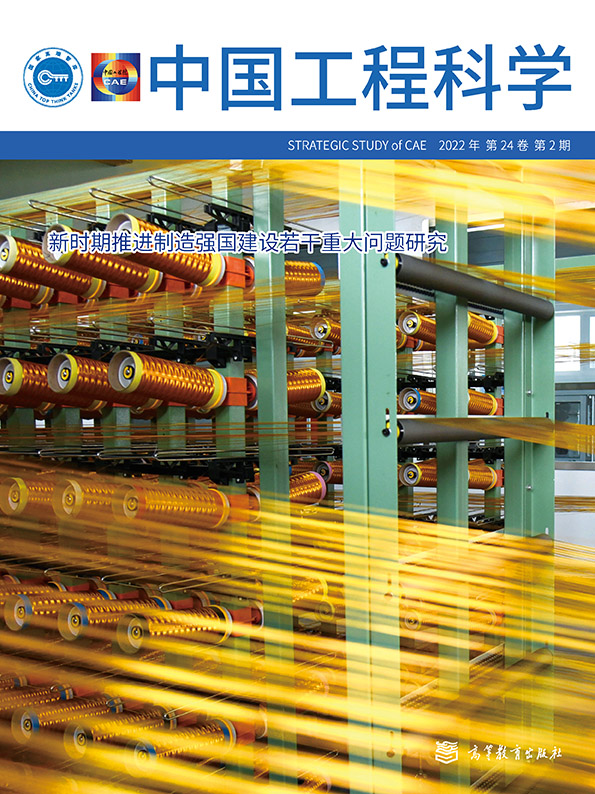











 京公网安备 11010502051620号
京公网安备 11010502051620号




